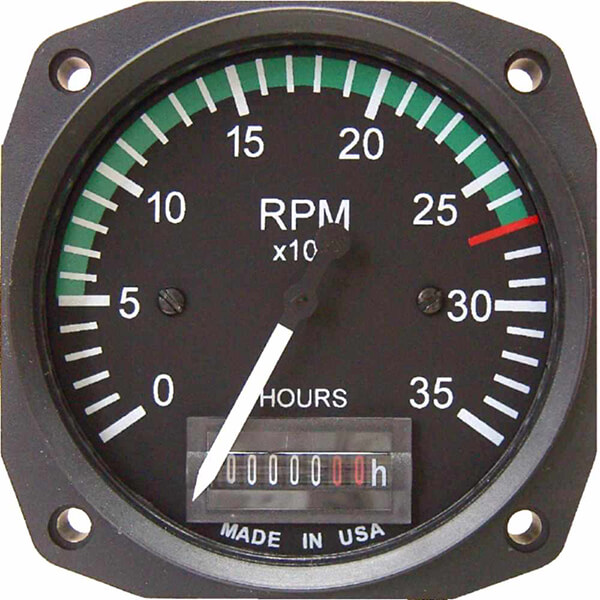Exploring the Features and Advantages of a Tachometer: A Comprehensive Guide for Cars And Truck Fanatics
From supplying real-time data on engine speed to assisting in enhancing gear shifts, the tachometer serves as even more than simply a dial on the control panel. Its diverse features not just boost driving experience yet also play a critical role in maintaining engine wellness and effectiveness.
Comprehending the Basics of a Tachometer
In the world of automotive instrumentation, recognizing the fundamentals of a tachometer is vital for any auto lover aiming to look into the details of engine performance surveillance. A tachometer, commonly displayed on the dashboard of a lorry, determines the engine's revolutions per minute (RPM) This crucial tool supplies real-time data on just how fast the engine crankshaft is revolving. By keeping an eye on the RPM, drivers can ensure they are running within the optimum array to make best use of efficiency and effectiveness.
Tachometers commonly have a range noted in revolutions per minute, with a redline suggesting the optimum rate at which the engine can safely operate (tachometer). This info is essential for avoiding engine damage and enhancing equipment changing for manual transmissions. Furthermore, tachometers can help in detecting engine concerns such as misfires or a stopping working ignition system by finding uneven RPM analyses
Importance of Keeping An Eye On Engine Speed

Keeping an eye on engine speed is a crucial aspect of vehicle maintenance and efficiency optimization for automobile enthusiasts and specialists alike. The engine rate, measured in changes per min (RPM), suggests how quickly the engine's crankshaft is turning. By maintaining a close eye on the RPM, vehicle drivers can ensure that the engine is running within the ideal range, protecting against prospective damages from over-revving or delaying. Keeping an eye on engine speed is particularly important throughout gear changes, as it assists chauffeurs establish the ideal time to change gears for smooth velocity and effective fuel usage.
Furthermore, tracking engine speed can also offer important insights into the total wellness of the automobile. On the whole, checking engine speed with a tachometer is an essential method that can enhance driving performance, lengthen engine life, and make certain a more secure and more pleasurable driving experience.
Enhancing Performance Via Equipment Shifts
Maximizing performance through calculated equipment changes is an essential aspect of optimizing an automobile's effectiveness and power outcome. Proper equipment moving guarantees that the engine runs within its optimum power band, permitting smooth velocity and improved gas economic climate. When shifting equipments, it is important to take notice of the engine speed showed on the tachometer. By checking the engine transformations per min (RPM), motorists can identify one of the most suitable moments to upshift or downshift for ideal performance.

To achieve peak performance with equipment changes, vehicle drivers should exercise smooth and timely transitions between gears, matching engine speed with road speed to harness the full possibility of their automobile's powertrain.
Taking Full Advantage Of Effectiveness With a Tachometer
Grasping the art of equipment moving in high-performance cars not just boosts driving experience but also plays a vital duty in maximizing effectiveness with a tachometer. tachometer. By paying very close attention to the tachometer analyses, motorists can enhance their equipment shifts to operate within the engine's most read this effective array. When increasing, moving gears at the best RPM indicated by the tachometer can prevent the engine from exhausting or underperforming, leading to boosted gas effectiveness and general performance
Additionally, a tachometer aids chauffeurs prevent unnecessary revving, which not just loses fuel but additionally places unneeded strain on the engine. Consistently monitoring the tachometer while driving permits for smoother equipment transitions, reducing deterioration on the transmission system with time.

Advanced Tips for Tachometer Application
Enhancing driving accuracy with adept tachometer interpretation is essential to enhancing vehicle efficiency. To look into advanced ideas for tachometer utilization, think about incorporating using change lights. Shift lights are aesthetic indications that illuminate when it's time to move gears based upon engine changes per minute (RPM), permitting for smooth gear modifications without regularly monitoring the tachometer. In addition, exercising heel-and-toe downshifting technique can be valuable when aiming for smoother shifts in between gears. This method includes making use of both the brake and accelerator pedals simultaneously while downshifting, assisting to preserve engine RPM and protect against jerky movements. Moreover, making use of an efficiency tachometer with customizable settings can supply real-time information tailored to certain driving preferences or automobile modifications. By a knockout post fine-tuning change points and establishing warning thresholds, drivers can optimize acceleration and engine efficiency while reducing the danger of over-revving. These innovative strategies, when combined with a deep understanding of check it out tachometer analyses, can raise driving efficiency and general driving experience.
Conclusion
Finally, the tachometer acts as a vital device for automobile enthusiasts to check engine rate, enhance efficiency with equipment shifts, and make best use of effectiveness. By understanding the features and benefits of a tachometer, drivers can optimize their driving experience and lengthen the life expectancy of their vehicle. Making use of sophisticated pointers for tachometer use can further enhance driving skills and total performance when driving.